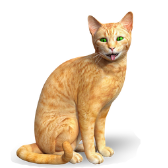-
Posts
452 -
Joined
Reputation Activity
-
 kaffeeundsalz reacted to carl123 in Arranging my workspace
kaffeeundsalz reacted to carl123 in Arranging my workspace
On Windows it's not just a second column you can have. You can have 3,4,5 etc. It's appears just to be limited by your screen size
Likewise, you can also dock multiple columns to the left
-
 kaffeeundsalz reacted to R C-R in Arranging my workspace
kaffeeundsalz reacted to R C-R in Arranging my workspace
Right. The mac versions currently support only one left & one right docked Studio panel column, not two on the same side of the document window.
-
 kaffeeundsalz reacted to kenmcd in What is Best Font Substitute for Helvetica
kaffeeundsalz reacted to kenmcd in What is Best Font Substitute for Helvetica
My favorite: Kern in Hellvetica
-
 kaffeeundsalz reacted to Andy05 in What is Best Font Substitute for Helvetica
kaffeeundsalz reacted to Andy05 in What is Best Font Substitute for Helvetica
No, OpenDyslexic won with ease. Hands down. But we had to test fonts which are commonly available without the need to install OpenDyslexic. Even though latter is open source, most schools don't allow the installation of own fonts. Hence, the test with "common" fonts as well.
What I learned is that a font seems to need some "uniqueness" to each individual char. I. e. "b" and "d" can't be just mirrored, nor can b and q look alike, just rotated by 180°. Sometimes, just a variation of the thickness of one of the lines (i. e. the upper half of the "b" vs. bottom half of "d") already helped the kids massively. Often, single letters seem to get shifted around, flipped horizontally or vertically, mirrored etc. I've been told, that that's what sometimes happens at least to some people with dyslexia. So, even if the brain is messing around by flipping the letters, there's still something to differ. And that seems to help.
Disclaimer: I'm by no means any expert in this matter. But that's what I just observed by following the procedures during the tests made.
-
 kaffeeundsalz got a reaction from RNKLN in What is Best Font Substitute for Helvetica
kaffeeundsalz got a reaction from RNKLN in What is Best Font Substitute for Helvetica
Looking at what others have done, Comic Sans seems to be a reasonable alternative.
-
 kaffeeundsalz reacted to Fixx in What is Best Font Substitute for Helvetica
kaffeeundsalz reacted to Fixx in What is Best Font Substitute for Helvetica
Now I would say most pressing question is What is Best Font Substitute for Comic Sans?
-
 kaffeeundsalz got a reaction from 000 in What is Best Font Substitute for Helvetica
kaffeeundsalz got a reaction from 000 in What is Best Font Substitute for Helvetica
Looking at what others have done, Comic Sans seems to be a reasonable alternative.
-
 kaffeeundsalz got a reaction from user_0815 in What is Best Font Substitute for Helvetica
kaffeeundsalz got a reaction from user_0815 in What is Best Font Substitute for Helvetica
Looking at what others have done, Comic Sans seems to be a reasonable alternative.
-
 kaffeeundsalz got a reaction from Alfred in What is Best Font Substitute for Helvetica
kaffeeundsalz got a reaction from Alfred in What is Best Font Substitute for Helvetica
In case you don't already know, there's a very interesting read about this: https://designforhackers.com/blog/comic-sans-hate/
-
 kaffeeundsalz got a reaction from Alfred in What is Best Font Substitute for Helvetica
kaffeeundsalz got a reaction from Alfred in What is Best Font Substitute for Helvetica
Looking at what others have done, Comic Sans seems to be a reasonable alternative.
-
 kaffeeundsalz got a reaction from loukash in What is Best Font Substitute for Helvetica
kaffeeundsalz got a reaction from loukash in What is Best Font Substitute for Helvetica
Looking at what others have done, Comic Sans seems to be a reasonable alternative.
-
 kaffeeundsalz reacted to GarryP in Changing Page Order does NOT adapt to spread page margins
kaffeeundsalz reacted to GarryP in Changing Page Order does NOT adapt to spread page margins
The software has done exactly what you have told it to do, it has moved the layers from the right-hand page to the left-hand page.
The margins are on the master page associated with the spread and so they don’t automatically move, and the layers on the page have no relationship to the margins – margins are for visual layout purposes only, they don’t affect the actual layout.
If you want the moved layers to conform to the layout of the spread then you need to put those layers on a master page instead.
See my attached video – first part is what you have, second part is what I think you need.
2021-03-26_08-23-59.mp4 -
 kaffeeundsalz got a reaction from IPv6 in Pasting pixel data into mask layer
kaffeeundsalz got a reaction from IPv6 in Pasting pixel data into mask layer
Ah, I see. You also want to paste into mask layers, nested layers etc. Sorry, I didn't get this. "Merge down" with Cmd+E has indeed the side effects you mention.
-
 kaffeeundsalz got a reaction from PaulEC in Any essential Indesign features that Affinity Publisher lacks?
kaffeeundsalz got a reaction from PaulEC in Any essential Indesign features that Affinity Publisher lacks?
That's exactly what I was trying to say. And there's more to it: What I've learned from following these forums is that people are not equally flexible in transferring their knowledge and experience to a new piece of software. There are users (and I think and hope these might be in the majority) who can adapt to different implementations quite easily and can find and accept workarounds for missing features. On the other hand, some users really seem to expect that the entire UX needs to be perfectly identical to the software they come from. I've actually seen someone complain about the foreground and background color swatches of Affinity Photo being arranged differently than in Photoshop. (Now wait until they figure out that e.g. there's no such thing as Smart Objects in Affinity Photo. 😱) So even if feature equivalents do exist, people may not necessarily be happy with the solutions the program offers. In the end, it's a question of how much the end result counts vs. the way to get there.
-
 kaffeeundsalz got a reaction from Joachim_L in Any essential Indesign features that Affinity Publisher lacks?
kaffeeundsalz got a reaction from Joachim_L in Any essential Indesign features that Affinity Publisher lacks?
That's exactly what I was trying to say. And there's more to it: What I've learned from following these forums is that people are not equally flexible in transferring their knowledge and experience to a new piece of software. There are users (and I think and hope these might be in the majority) who can adapt to different implementations quite easily and can find and accept workarounds for missing features. On the other hand, some users really seem to expect that the entire UX needs to be perfectly identical to the software they come from. I've actually seen someone complain about the foreground and background color swatches of Affinity Photo being arranged differently than in Photoshop. (Now wait until they figure out that e.g. there's no such thing as Smart Objects in Affinity Photo. 😱) So even if feature equivalents do exist, people may not necessarily be happy with the solutions the program offers. In the end, it's a question of how much the end result counts vs. the way to get there.
-
 kaffeeundsalz got a reaction from jmwellborn in Any essential Indesign features that Affinity Publisher lacks?
kaffeeundsalz got a reaction from jmwellborn in Any essential Indesign features that Affinity Publisher lacks?
That's exactly what I was trying to say. And there's more to it: What I've learned from following these forums is that people are not equally flexible in transferring their knowledge and experience to a new piece of software. There are users (and I think and hope these might be in the majority) who can adapt to different implementations quite easily and can find and accept workarounds for missing features. On the other hand, some users really seem to expect that the entire UX needs to be perfectly identical to the software they come from. I've actually seen someone complain about the foreground and background color swatches of Affinity Photo being arranged differently than in Photoshop. (Now wait until they figure out that e.g. there's no such thing as Smart Objects in Affinity Photo. 😱) So even if feature equivalents do exist, people may not necessarily be happy with the solutions the program offers. In the end, it's a question of how much the end result counts vs. the way to get there.
-
 kaffeeundsalz got a reaction from jmwellborn in Any essential Indesign features that Affinity Publisher lacks?
kaffeeundsalz got a reaction from jmwellborn in Any essential Indesign features that Affinity Publisher lacks?
@PhilipJohnston I think I understand where you're coming from, but with the way your question is phrased, it can't be answered in a meaningful way. There are approximately hundrets of features that InDesign has and Affinity Publisher doesn't. That's because you're comparing a program that has a 20 year long history with a product that's still relatively new to the market. People complain about missing features for sure – but different ones depending on their use case. For any guess about what you might be missing in Publisher, we'd need to know what you use InDesign for. But even then, your best bet is the one you already started: download the trial version and try replicating one of your real-world projects in Affinity Publisher, first a simple one, then a more complex one. In doing so, it's pretty safe that sooner or later, you will discover most of Publisher's shortcomings that are relevant to your workflow. Then, ask here in the forums for a workaround and decide if you can live with it. Also note that the trial period of the Affinity suite is still a whole 90 days at the moment. That should be more than enough for you to make a choice.
-
 kaffeeundsalz reacted to PhilipJohnston in Any essential Indesign features that Affinity Publisher lacks?
kaffeeundsalz reacted to PhilipJohnston in Any essential Indesign features that Affinity Publisher lacks?
Many thanks for the replies so far.
Point is well taken that any meaningful answer depends on knowing the user's workflow requirements.
Which means my question wasn't fair—it effectively asked for sight-unseen reassurance that my future projects would not require Indesign again, were I to switch.
(It's too late in any case. I've bought the Affinity suite already. They had me at StudioLink.)
-
 kaffeeundsalz got a reaction from Dazmondo77 in Any essential Indesign features that Affinity Publisher lacks?
kaffeeundsalz got a reaction from Dazmondo77 in Any essential Indesign features that Affinity Publisher lacks?
@PhilipJohnston I think I understand where you're coming from, but with the way your question is phrased, it can't be answered in a meaningful way. There are approximately hundrets of features that InDesign has and Affinity Publisher doesn't. That's because you're comparing a program that has a 20 year long history with a product that's still relatively new to the market. People complain about missing features for sure – but different ones depending on their use case. For any guess about what you might be missing in Publisher, we'd need to know what you use InDesign for. But even then, your best bet is the one you already started: download the trial version and try replicating one of your real-world projects in Affinity Publisher, first a simple one, then a more complex one. In doing so, it's pretty safe that sooner or later, you will discover most of Publisher's shortcomings that are relevant to your workflow. Then, ask here in the forums for a workaround and decide if you can live with it. Also note that the trial period of the Affinity suite is still a whole 90 days at the moment. That should be more than enough for you to make a choice.
-
 kaffeeundsalz got a reaction from Zorba in I Can't Get My Book Cover Right
kaffeeundsalz got a reaction from Zorba in I Can't Get My Book Cover Right
It's what always happens when RGB goes to CMYK. These are the two color spaces you're converting between. It has nothing to do with the file format. And yes, the loss of bright, saturated blue tones is expected when converting to CMYK. These colors are simply not part of the color model because physics. Your only way around this is the use of spot colors in print, but this is probably too complicated and Affinity lacks proper support for spot color channels.
In your case, I would first try to add an HSL adjustment and shift the master hue about 20 degrees clockwise before converting. This will significantly alter the sky color towards cyan, but it should at least bring back the bright colorful appearance of the original image.
-
 kaffeeundsalz got a reaction from Ammar in Layers Panel Design
kaffeeundsalz got a reaction from Ammar in Layers Panel Design
It's not always empty – it's the place where the vertical scroll bar appears when the contents don't fit into the Layers panel with its current height. Granted, I don't know why the column is always visible given that other panels do behave differently indeed. For example, both the Channels and the Adjustment panel in Affinity Photo hide the scroll bar area entirely as long as it's not needed. Also, from what I can see, Serif applications don't respect the "Show scroll bars" setting of macOS under System Preferences > General.
-
 kaffeeundsalz got a reaction from A_B_C in Shape tool cursor
kaffeeundsalz got a reaction from A_B_C in Shape tool cursor
Just wanted to confirm that this is happening for me, too. Additionally, sometimes after drawing the shapes, the cursor icon will change to something else like e.g. the move cursor or the rotate cursor.
-
 kaffeeundsalz got a reaction from Patrick Connor in Affinity Photo Workbook
kaffeeundsalz got a reaction from Patrick Connor in Affinity Photo Workbook
@Patrick Connor Thank you for these insights. Much appreciated!
-
 kaffeeundsalz reacted to Patrick Connor in Affinity Photo Workbook
kaffeeundsalz reacted to Patrick Connor in Affinity Photo Workbook
@Jim [pre 1965 classic]& @AdamBurnett
Welcome to the Serif affinity forums
The workbooks teach techniques that do not tend to change with each release. Every time there is a major release (like 1.7, 1.8, 1.9) we check that the workbooks are still correctly reflecting the applications, and tweak whatever needs tweaking in the master source file. Those changes normally don't amount to more that a word or two or a screenshot or two. Whenever we run out of stock we will use the latest maintained master copy and have that reproduced. So for example we are currently selling the 3rd or 4th revision of the Affinity Photo Workbook, but as I say you would have to look very hard to spot the differences over the first edition.
We are currently out of stock of our workbooks so this process is being done now, and any workbooks sent out when the new stock comes in will be correct to the latest release 1.9.
-
 kaffeeundsalz got a reaction from robertstirling in greyscale
kaffeeundsalz got a reaction from robertstirling in greyscale
What the OP probably means is that brightness/contrast and tint of an image area doesn't necessarly match the area that it's cloned to. One could try to play around with the patch tool which sometimes does a pretty good job at blending areas of different appearance. Personally, I end up using manual corrections with nested Curves layers most of the time.











